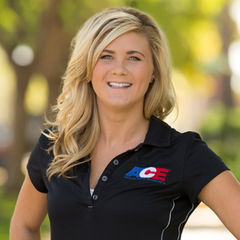Assessments performed at the start of a client’s program are a great way to track progress and increase motivation. These assessments are divided into four categories: anthropometric measurements (body size or body composition), cardiovascular assessments, muscular fitness assessments, and sport-skills assessments.
For each assessment, your goal is to identify the objective of the assessment (why do we perform this assessment or what information can we gather?), who it is appropriate for (special populations or contraindications), and any advantages or disadvantages of these assessments. This blog focuses on the two types of cardiovascular assessments: VO2 assessments (treadmill assessments, cycle ergometer assessments, field tests, etc.) and ventilatory threshold assessments. VO2 assessments measure predicted VO2max to give us an idea of a client’s cardiovascular health and fitness. Ventilatory threshold assessments determine an individual’s heart rate at his or her first and second ventilatory threshold; this information is used to create an individualized training program. Each assessment has its advantages and disadvantages, so it is important to identify the most appropriate assessment for your client.
Cardiovascular Assessments
It is important to understand when it is appropriate to perform a cardiovascular assessment. When someone is not accustomed to exercise, we don’t want to overwhelm them with assessments. Typically, if a client is new to exercise, your focus should be on establishing an aerobic base. You want to help your client get accustomed to moving for extended periods of time (about 20 to 30 minutes of continuous exercise) at a moderate intensity. During this time, there is no real need to perform a cardiovascular assessment for two reasons: 1) They’re not going to be going at an intensity above either of the ventilatory thresholds, and 2) We know they’re probably not going to perform well on a VO2 assessment because they’re deconditioned. We want to create a positive experience, so putting a client through all sorts of challenging assessments only to tell them they were “Below Average” probably wouldn’t make them feel very positive. Wait until your client has established his or her aerobic base before performing a cardiovascular assessment.
So, why would you want to perform a VO2 vs. VT1/VT2 assessment? Typically, VO2max assessments are only performed in clinical or university settings. Submaximal assessments are generally safer, require much less specialized equipment, and can effectively predict a client’s VO2max. While you can use VO2 to create a program using %VO2 reserve, there are multiple predictions involved (predicted VO2max, predicted maximal heart rate, etc.), which makes it less individualized. With ventilatory threshold assessments, however, there is no prediction involved. It’s simply establishing exactly where your client’s heart rate is when he or she crosses that ventilatory threshold. This can then be used as a marker to create interval training once the client has established his or her aerobic base.
For example, let’s say you’ve just performed the submaximal talk test to determine your client’s heart rate (HR) at VT1 is 130 beats per minute (BPM). For example, during cardio interval training you could have your client exercise at a heart rate above 130 BPM for one minute and slow down to a recovery pace below 130 BPM for three minutes. Whether you elect to perform a VO2 or VT1/VT2 assessment will depend on the needs of your client. Do you want a measure of cardiovascular health and fitness (VO2) or do you need markers of intensity to create the most individualized program (VT1/VT2)? Let this guide you as you select which assessment best serves those needs.
Key Topics to Remember:
For any of these assessments, the most important things to identify are:
- What is the objective (purpose) of the assessment?
- Is the assessment appropriate for this client (i.e., are there any contraindications)?
- What are the advantages or disadvantages of this assessment for this client?
Let’s take the Bruce treadmill test as an example:
Objective: Determine predicted VO2max to better understand the client’s current level of cardiovascular fitness
Who it’s appropriate for: “Due to the difficulty with this test, it is generally not appropriate for deconditioned individuals or the elderly”. There are also contraindications for ALL treadmill tests for those who have visual or balance problems and cannot use a treadmill without holding on to a handrail, orthopedic problems aggravated by prolonged walking (e.g., low-back pain), obese individuals who suffer from both balance and orthopedic issues, and/or those with foot neuropathy.
Advantages/Disadvantage: The Bruce treadmill test is a challenging assessment (could be a pro or con). In the clinical setting, it’s effective for evaluating cardiac function and fitness when performed to maximal effort (pro).
For information on other types of physiological assessments, click here.
 by
by 







 by
by